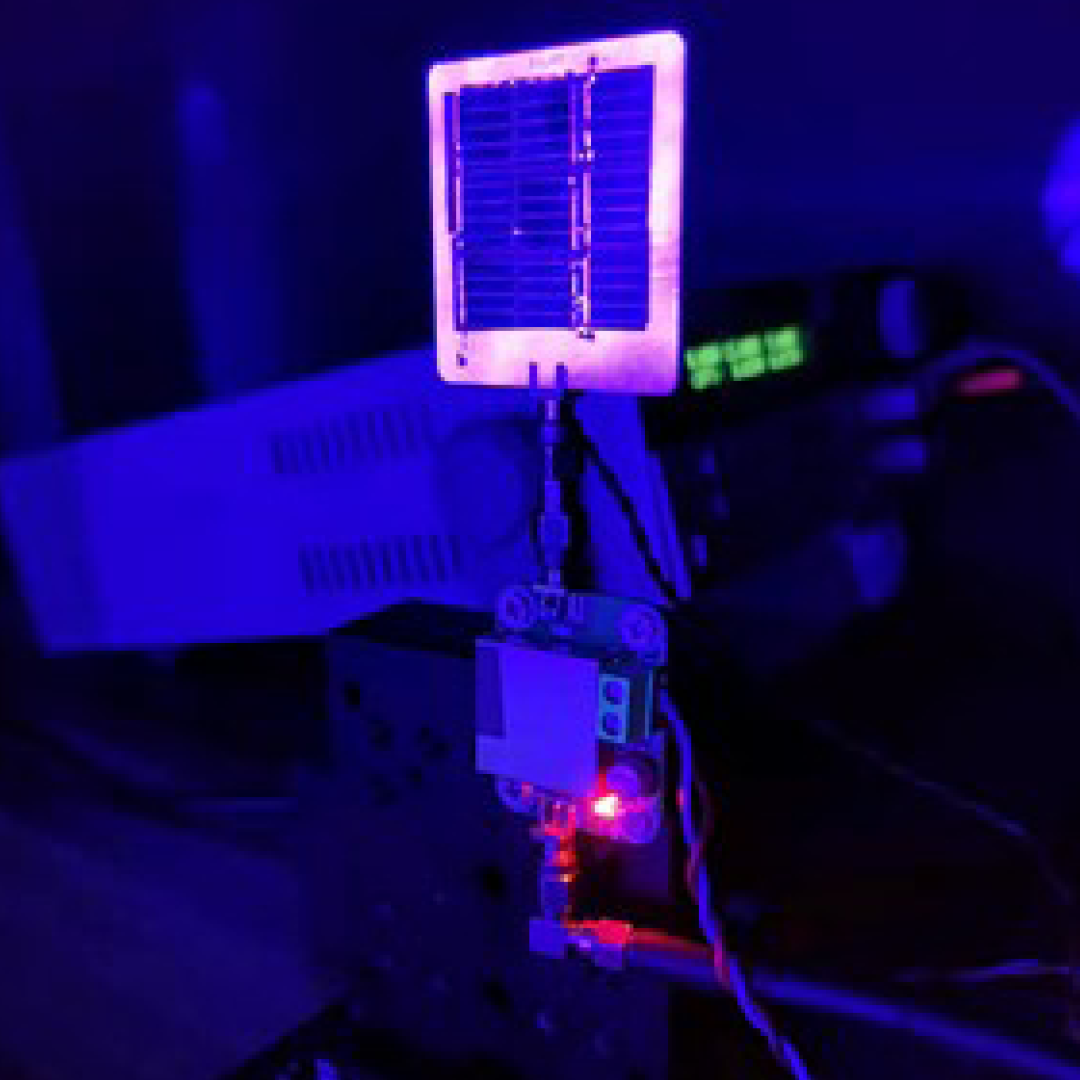While solar cells are normally used to convert light into electricity, researchers have demonstrated that they may also be utilized to produce high-speed underwater wireless optical communication. The novel method, which relied on a network of series-connected solar cells as detectors, could provide a low-cost, low-energy mechanism to send data underwater.
 Researchers showed that high data rates can be achieved by using an array of solar cells as the detector in an underwater wireless optical communication system. Image Credit: Jing Xu, Zhejiang University.
Researchers showed that high data rates can be achieved by using an array of solar cells as the detector in an underwater wireless optical communication system. Image Credit: Jing Xu, Zhejiang University.
There is a critical need for efficient underwater communication to meet the increasing demands of underwater data exchange in worldwide ocean protection activities.
Jing Xu, Research Team Lead, Zhejiang University
For instance, data links are required to convey data from divers, manned submarines, underwater sensors and unmanned remotely operated underwater vehicles to surface ships assisting their work in coral reef conservation initiatives.
Xu and colleagues describe laboratory trials in which they created an optimal lens-free system for high-speed optical detection underwater using a variety of widely accessible solar cells. Photodiodes, which have traditionally been utilized as detectors in wireless optical communication, have a much smaller detecting area than that of solar cells. The study was published in the Optica Publishing Group’s journal Optics Letters.
To the best of our knowledge, we demonstrated the highest bandwidth ever achieved for a commercial silicon solar panel-based optical communication system with a large detection area. This type of system could even allow data exchange and power generation with one device.
Jing Xu, Research Team Lead, Zhejiang University
Optimizing Solar Cells for Communication
Light-based underwater wireless communication has a higher speed, lower latency and uses less energy than radio or acoustic waves. Most long-distance high-speed optical systems, on the other hand, are not suitable for underwater use as they necessitate precise alignment between the light transmitter and the receiver that recognizes the incoming light signal.
Since solar cells collect light from a wide area and transform it into an electrical signal, utilizing them as detectors in an underwater wireless communication system can reduce the need for transmitter-receiver alignment. However, since solar cells are designed for energy harvesting rather than transmission, achieving high bandwidth has proven problematic.
Until now, achieving high-speed links using off-the-shelf silicon solar cells has required complex modulation schemes and algorithms, which need intense computing resources that use extra power and create a high processing latency. Using modeling and simulation of connected solar cells, we optimized the peripheral circuit, which significantly improved the performance of our solar cell-based detector.
Jing Xu, Research Team Lead, Zhejiang University
Underwater Testing
In a 7-m long water tank that mimicked an underwater conduit, the scientists tested the new design, which used 3 × 3 solar arrays to provide a detecting area of 3.4 × 3.4 cm. The optical signal’s path length was extended using mirrors, resulting in a transmission distance of 35 m.
The system demonstrated a high level of reliability, low energy consumption and efficiency. The −20 dB bandwidth grows from 4.4 MHz to 24.2 MHz as the solar array size increases from 1 × 1 to 3 × 3.
Despite adopting a basic modulation strategy, the new device had a substantially higher detection bandwidth — and thus a higher data rate — than prior experiments that used commercial silicon solar cells with a large detection range as detectors.
Applying a 90 V reverse bias voltage increased the bandwidth even more, resulting in a −20 dB bandwidth of 63.4 MHz. Using the simplest kind of amplitude-shift keying modulation, this bandwidth allowed a 35 m/150 Mbps underwater wireless optical link.
“Because solar cells are mass produced, the proposed scheme is quite cost effective. Beyond the underwater world, this type of detector could also be used in visible light communication, a type of wireless communication that uses visible light from LEDs and other sources to transmit data across distances,” said Xu.
The researchers intend to test the overall system performance with poor optical signals further, to improve it for real-world applications in underwater communication. This will demonstrate how well it performs in murky water and in the presence of movement. They are also fine-tuning crucial factors like the number of solar cells in the array and the essential reverse bias voltage to make the device more realistic.
Journal Reference:
Tong, Z., et al. (2022) Series-connected solar array for high-speed underwater wireless optical links. Optics Letters. doi.org/10.1364/OL.449466.